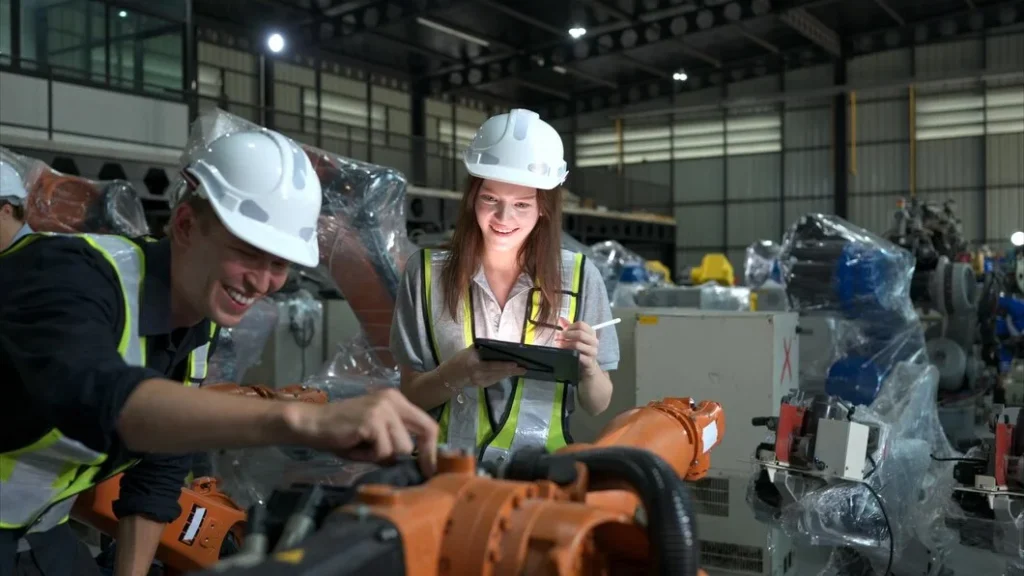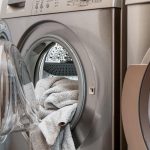Protecting workers and maintaining a safe work environment is paramount when operating industrial cleaning equipment. What safety features should I look for in aqueous parts washers?
The essential safety features for aqueous parts washers include automatic shutoff controls, emergency stop buttons, temperature regulators, proper ventilation systems, and ground fault circuit interrupters (GFCIs).
While these essential safety features are crucial, there’s much more to consider depending on your application, cleaning requirements, and workplace conditions. Understanding the range of available safety options will help you make a more informed decision and ensure maximum worker protection.
How Do Different Industries Affect Safety Feature Requirements?
Different industries have varying safety needs based on their specific cleaning applications. For example, automotive repair facilities often deal with oil-based contaminants and require features like oil/water separators and specialized filtration systems. Food processing plants need additional sanitation controls and NSF-certified components to prevent cross-contamination. Electronics manufacturers must have precise temperature controls and static discharge protection to prevent damage to sensitive components.
Additionally, aerospace and medical device manufacturers require specialized features like ultrasonic cleaning capabilities and validation systems to ensure compliance with strict industry standards. Heavy manufacturing facilities need robust safety features to handle large, heavy parts. They may require reinforced loading mechanisms, while pharmaceutical companies must maintain cleanroom-compatible systems with advanced filtration and sterilization capabilities to prevent product contamination.
What Additional Safety Features Provide Enhanced Worker Protection?
Beyond the basic safety features, modern aqueous parts washers can include ergonomic loading systems to prevent strain injuries, automatic lid locks that prevent access during operation, and low-water shutoff sensors to prevent heating element damage. Some models also feature LED warning lights, audible alarms for cycle completion or malfunction, and digital displays that monitor cleaning solution chemistry. These advanced features protect workers and help maintain equipment longevity and cleaning effectiveness.
Further safety innovations include motion sensors that detect unauthorized access to cleaning zones, anti-scalding protection systems for hot water operations, and emergency ventilation boosters that activate automatically when chemical vapor levels exceed preset thresholds. Many modern units also incorporate adjustable platforms and lift-assist mechanisms to accommodate workers of different heights and physical capabilities, reducing the risk of repetitive stress injuries and improving workplace ergonomics.
How Do Environmental Regulations Impact Safety Requirements?
Environmental safety is increasingly important in parts washing operations. Modern systems should include features that help comply with EPA and local regulations, such as efficient filtration systems that extend solution life and reduce VOC emissions through proper ventilation and waste minimization controls. Some units now incorporate intelligent monitoring systems that track water usage and chemical consumption, helping facilities maintain environmental compliance while also protecting worker safety. Many jurisdictions require specific safety features for wastewater handling and disposal, making these considerations crucial for facility managers.
The evolution of environmental regulations has also led to the development of closed-loop recycling systems and advanced water treatment technologies. These systems help facilities meet stringent environmental standards and provide cost savings through reduced water consumption and waste disposal fees. Modern parts washers often include automatic chemical dosing systems to prevent overuse, oil coalescers for more efficient separation, and sophisticated filtration systems that can remove particles down to submicron levels.
What Are The Benefits Of Automated Safety Monitoring Systems?
Modern aqueous parts washers increasingly feature automated monitoring systems that provide real-time safety oversight. These systems continuously track parameters like solution temperature, chemical concentration, and water levels, automatically adjusting or shutting down the system if readings fall outside safe ranges. This automation reduces human error and provides consistent documentation for safety compliance. Many systems now include remote monitoring capabilities, allowing maintenance teams to address potential safety issues before they become problems.
Integrating Industry 4.0 technologies has further enhanced these monitoring systems with predictive maintenance capabilities and data analytics. Advanced sensors can now detect wear patterns in critical components, predict potential equipment failures, and automatically schedule maintenance interventions. This proactive approach improves safety and optimizes operational efficiency by reducing unexpected downtime and maintaining consistent cleaning performance.
How Should Safety Features Be Maintained And Tested?
Regular maintenance and testing of safety features are crucial for ensuring continued protection. Safety systems should be inspected daily before the operation, with more comprehensive testing performed weekly or monthly, depending on usage. Key checkpoints include testing emergency stop functions, verifying temperature control accuracy, checking lid safety interlocks, and ensuring proper ventilation flow rates. Documentation of these safety checks is essential for regulatory compliance and can help identify potential issues before they lead to accidents. Training programs should include proper maintenance procedures and troubleshooting protocols for all safety features.
Beyond routine maintenance, organizations should implement a comprehensive preventive maintenance program that includes periodic third-party safety audits and certification reviews. This program should encompass regular calibration of sensors and control systems, verification of safety interlocks and emergency systems, and thorough testing of all automated safety features. It’s also important to maintain detailed maintenance logs and regularly update standard operating procedures to reflect any changes in equipment configuration or safety protocols.
Enhancing Operational Efficiency
Before purchasing or upgrading your aqueous parts washer, create a detailed checklist of required safety features based on your specific industry requirements and local regulations. Then, schedule consultations with multiple equipment suppliers to compare how their systems meet these requirements. Be sure to request documentation of safety certifications and testing protocols for any model you’re considering.







